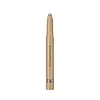What's inside
What's inside
 Key Ingredients
Key Ingredients

 Benefits
Benefits

 Concerns
Concerns

 Ingredients Side-by-side
Ingredients Side-by-side

Methyl Trimethicone
Skin ConditioningCI 77891
Cosmetic ColorantSynthetic Wax
AbrasiveOctyldodecanol
EmollientCaprylic/Capric Triglyceride
MaskingTrimethylsiloxysilicate
EmollientCI 77492
Cosmetic ColorantSorbitan Olivate
EmulsifyingMica
Cosmetic ColorantAcrylates/Stearyl Acrylate/Dimethicone Methacrylate Copolymer
CI 77499
Cosmetic ColorantStearalkonium Hectorite
Gel FormingCI 77491
Cosmetic ColorantEthylene/Propylene Copolymer
AbrasiveCoco-Caprylate/Caprate
EmollientCaprylic/Capric Triglyceride
MaskingTriheptanoin
Skin ConditioningOctyldodecanol
EmollientSynthetic Wax
AbrasiveRicinus Communis Seed Oil
MaskingPolyhydroxystearic Acid
EmulsifyingDisteardimonium Hectorite
StabilisingHelianthus Annuus Seed Wax
Skin ConditioningOryza Sativa Bran Wax
Skin ConditioningSynthetic Beeswax
Emulsion StabilisingDilinoleic Acid/Butanediol Copolymer
Tocopheryl Acetate
AntioxidantCastor Oil/Ipdi Copolymer
Ceramide NP
Skin ConditioningTocopherol
AntioxidantCI 77499
Cosmetic ColorantCI 77491
Cosmetic ColorantCI 77492
Cosmetic ColorantCI 77891
Cosmetic ColorantCoco-Caprylate/Caprate, Caprylic/Capric Triglyceride, Triheptanoin, Octyldodecanol, Synthetic Wax, Ricinus Communis Seed Oil, Polyhydroxystearic Acid, Disteardimonium Hectorite, Helianthus Annuus Seed Wax, Oryza Sativa Bran Wax, Synthetic Beeswax, Dilinoleic Acid/Butanediol Copolymer, Tocopheryl Acetate, Castor Oil/Ipdi Copolymer, Ceramide NP, Tocopherol, CI 77499, CI 77491, CI 77492, CI 77891
Ingredients Explained
These ingredients are found in both products.
Ingredients higher up in an ingredient list are typically present in a larger amount.
This ingredient is an emollient, solvent, and texture enhancer. It is considered a skin-softener by helping the skin prevent moisture loss.
It helps thicken a product's formula and makes it easier to spread by dissolving clumping compounds.
Caprylic Triglyceride is made by combining glycerin with coconut oil, forming a clear liquid.
While there is an assumption Caprylic Triglyceride can clog pores due to it being derived from coconut oil, there is no research supporting this.
Learn more about Caprylic/Capric TriglycerideCi 77491 is also hydrated iron III oxide. It's sole purpose is to give a red/pink hue to products.
Iron III oxides are classified as inorganic chemicals for coloring.
Synthetically created Ci 77491 is considered safer than those naturally found. This is because the synthetically created version may contain less impurities. Iron oxides are generally non-toxic and non-allergenic.
Learn more about CI 77491Ci 77492 is also hydrated iron III oxide. It's sole purpose is to give a yellow hue to products.
Iron III oxides are classified as inorganic chemicals for coloring.
Synthetically created Ci 77492 is considered safer than those naturally found. This is because the synthetically created version may contain less impurities. Iron oxides are generally non-toxic and non-allergenic.
Learn more about CI 77492Ci 77499 is also hydrated iron III oxide. It is created from mixing red and black iron oxides. This helps give shades of darkness to a product.
Iron III oxides are classified as inorganic chemicals for coloring.
Ci 77891 is a white pigment from Titanium dioxide. It is naturally found in minerals such as rutile and ilmenite.
It's main function is to add a white color to cosmetics. It can also be mixed with other colors to create different shades.
Ci 77891 is commonly found in sunscreens due to its ability to block UV rays.
Learn more about CI 77891Octyldodecanol is a fatty alcohol. It is primarily used to enhance the texture of products.
As an emulsifier, Octyldodecanol helps prevent the oils and waters from separating. It also prevents ingredients from creating foam when shaken.
Octyldodecanol is created by reducing fatty acid to an alcohol.
Due to its high molecular weight, it does not get absorbed into the skin.
Learn more about OctyldodecanolSynthetic Wax is created from fossil fuels such as natural gas. It is used to enhance texture, adjust pH, and as an occlusive.
It may also be used as an abrasive ingredient to exfoliate the skin.
Synthetic Wax may not be fungal acne safe.
Learn more about Synthetic Wax